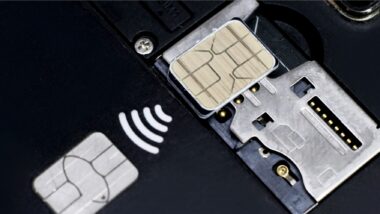
In the world we live in today we have a range of different digital identities that permit us to use a wide variety of online services. In most cases your digital identity is simply the email address you choose to provide and a secure password. Although this is a perfectly adequate requirement in these cases, it reveals less about your real identity and therefore is more vulnerable to being accessed by someone pretending to be you. However, there are circumstances, such as when accessing services like banking, or an enterprise’s resources remotely, where it’s critical to ensure that you have a trusted digital identity to prove you are who you are claiming to be online and that you have the right to access those services.
Mobile Network Operators (MNOs) and more generally Communication Service Providers (CSPs), already hold plenty of valuable information about their customers. Your mobile network, for example, will already have obtained information such as your name, date of birth, billing information, and mobile device type, when you signed up for a contract.
Given the advantageous position MNOs find themselves in, there are two ways they can play a key role as a trusted digital ID service provider, a role which benefits both their own customers, as well as other industries and governments who need to use Trusted Digital Identities for security-sensitive transactions.
- Digitalization of subscribers’ enrollment process
As the shift towards digital identification systems continue, MNOs are looking to digitize the enrollment process by capturing and verifying ID documents and biometrics. Not only does this process more effectively fight fraud, it also improves user experience.
Once this process is complete, the MNOs can aggregate all the verified data it holds and create trusted digital identities using static attributes, such as demography and biometrics. Together these characteristics can then serve as a gateway for subscribers to seamlessly and securely authenticate to access multiple security-sensitive services such as mobile money, eGov, online banking, mobile gambling and more generally all services that require strong ID verification procedures (such as Know Your Customer –KYC- and the UK Gambling Commission).
MNOs, therefore, have a crucial role in facilitating and accelerating the digital transformation of industries and government. This is because by committing to creating trusted digital IDs they remove the need for multiple institutions to produce their own separate trusted digital ID’s for their customers or citizens. What’s more, as MNOs have such a global reach their impact on creating trusted digital identities across the world could be exceptional.
- Aggregation of ID intelligence data
AI and advanced analytics can also greatly enhance the capability of MNOs to become a Trusted Digital ID service provider. This technology is already in use across the industry to provide drastic improvements in marketing insights, in order to tailor the products that MNOs offer, and for telecom network analysis. However, this technology can also be applied for intelligence driven user authentication, by gathering a collection of dynamic attributes together to offer real-time identification through many data points.
AI and machine learning analyze both user behavior and environmental patterns. Examples of the multitude of data points that can be analyzed include: the geolocation, the typing patterns of users with their mobile devices, app usage, network usage, browsing patterns and the surrounding signals like Bluetooth, and Wi-Fi. This behavioral biometric data can then be used for risk management, whenever authentication services are required. This is a kind of silent authentication.
Put simply, AI, machine learning and Big Data would be able to tell the likelihood of fraud based on the nature of characteristics of a transaction. This adds another layer of security for users.
Risk management analysis use cases
It is quite easy to see how this risk management analysis could be applied to the banking sector – a transaction unexpectedly made far away from the country you live in would require more authentication to check its legitimacy. What’s more, with the revised Payment Service Directive (PSD2) requiring financial institutions to adapt security measures to review the level of risk involved in every transaction made, fighting fraud using MNO Trusted Digital Identity solutions would be a way to help solve this problem.
In addition to this, the GMSA have also listed a set of steps MNOs can take to reduce the level of account takeovers and help prevent fraud. This highlights the importance of the role of MNOs in identifying high-risk sessions and assisting in Account Takeover Protection.
However, not only does this type of risk management aid the banking industry, it also works well in the enterprise sector for employees who want to access company resources, such as VPN or the cloud, remotely. Here, information such as geolocation and the types of network used for accessing the internal services or resources, can be used to evaluate how likely it is that the person wishing to have access to service is who they say they are. This adds another layer of non-intrusive security for the business and users.
When discussing any topic that involves the use of people’s personal data it is always important to make it clear that in order to be put in place, this process would have to meet all the necessary data privacy regulations across the world, such as GDPR in Europe. There would also have to be different specifications needed for each country. Consumers would need to be confident that they were in control of their data and could easily opt out if they didn’t want to be involved.
Beyond the Trusted Digital ID of individuals – the Trusted Digital ID of Things (IoT)

Looking to the future, the new generation of 5G networks will enable for the tremendous growth of connected objects that will interact with each other and individuals (projected by Juniper Research to reach an installed base of 64 billion units in 2023).
As is the case with people, connected objects will also need a trusted digital identity to be securely identified. Once a connected object has this trusted digital ID it can be enrolled and linked to its owner seamlessly and securely. In this way trusted digital IDs of people and object can become inherently linked, for example, commercial drones to their pilot.
With the data that MNOs have they could also help in this sphere, using existing technologies, such as eSIM management solutions, to pair up their subscribers with their objects. As the number of connected objects in the world booms, Big data, A.I and machine learning solutions will be essential to analyze and process the swell of the data that accompanies this growth and detect any anomalies.
If you want to know more about our Trusted Digital ID and AI solutions for MNOs, click on the links above.
What’s your perspective on the role of MNOs in providing Trusted Digital Identities? How do you envisage the future of digital identity? Let us know by tweeting to us at @GemaltoMobile, or by posting a comment below.


